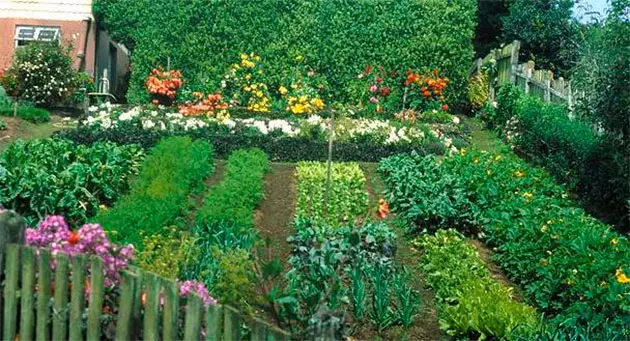
Late autumn is fading away. The scent of fallen leaves fills the air, and among them, the last chrysanthemum flower sways proudly. Now is the time to think about which seeds to buy, plan your garden beds, and stock up on fertilizers.
Creating a planting plan for a small plot of land can be challenging, but keep in mind that growing the same plant in the same spot year after year is not advisable. It’s essential to change your plan annually.
Before planting tulip bulbs, inspect them carefully. To combat gray mold, I recommend the following method: take 4-5 cloves of garlic, crush them, and soak them in 1 liter of water. Let your tulips soak in this solution for about an hour. Then, use a sharp knife to cut away any affected areas, but be careful not to remove more than one-third of the bulb. Wipe the cut with a cloth soaked in the solution, then let it dry thoroughly. Finally, coat the cut with cologne and dip it in paraffin.
To speed up the propagation of gladiolus, plant the bulbs with the bottom facing up or on their side; this will increase the number of “pups.” Gladiolus are less prone to disease if you water the soil with a garlic solution (40-50 grams of garlic ground through a meat grinder, steeped for a day in 10 liters of water).
Also, remember: planting garlic among flowers helps prevent powdery mildew and fusarium wilt. Garlic’s presence also protects strawberries from diseases.
Under the canopies of trees, you can sow forget-me-nots, which will thrive there. In other areas that receive sunlight in the afternoon or are completely shaded, you can plant daffodils, iberis, primroses, astilbes, and fragrant tobacco.
Peonies can grow in the same spot for 15 to 20 years, so they should be planted 70-80 cm apart. To encourage larger blooms, thin out the shoots and pinch off the side buds.
To protect plants from small insects, use a daily infusion of onion or garlic with added red pepper (one teaspoon per cup of water) for spraying.
If you want to extend the blooming period of phlox, cut half of the new shoots. This will encourage side shoots to develop on the rooted plants, which will bloom after the main ones.
When cutting tulips, leave at least two leaves. This ensures the bulb left in the ground develops properly.
The best time to plant tulips is from mid-September to October 10.
If you want to propagate tulips and daffodils to increase the bulb size and produce “pups,” you can cut the flowers shorter, without leaves. They can thrive in the same spot for 4-5 years. If you notice a different color appearing on the petals, it’s a sign of a viral disease in tulips. These should be cut away, and the bulbs treated with a potassium permanganate solution (pink in color).
